Astroloba congesta
Astroloba congesta (Salm-Dyck) Uitewaal
Family: Asphodelaceae
Common names: eastern astroloba (Eng.)
Introduction
The striking eastern astroloba is a real showstopper! Whether it's with flowers or not, it's guaranteed to elevate the beauty of your garden or landscape. Its vibrant, triangular leaves range from stunning shades of green to deep blue-green, often accented with a touch of reddish hues along the edges. This species is a true delight for plant lovers and those who appreciate the finer details.
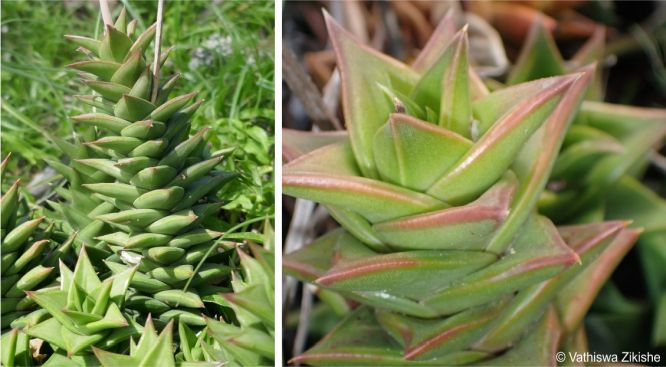
Description
Description
Astroloba congesta is a perennial succulent herb that forms a compact mass of slender stems. The stems can be erect or eventually sprawling, growing up to 250 mm long from the base. Leaves are arranged in five straight rows, glossy and smooth, with a sharply pointed tip and a hard-edged margin and keel. Flowers are arranged straight up in tall, multi-branched spikes, green with a creamy tinge. Flowering all year round, with peaks in midsummer (January) and spring (September).
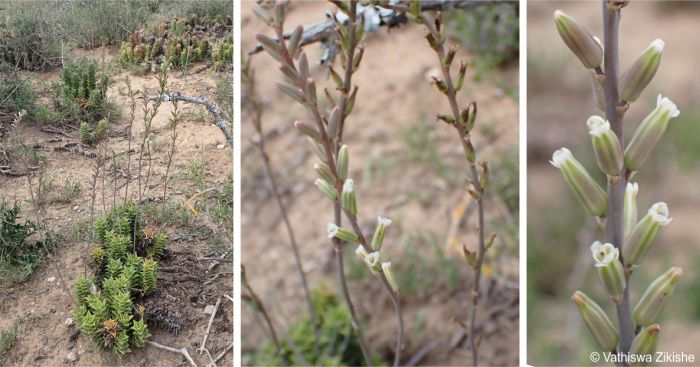
Astroloba congesta differs from its close relative A. foliosa in having larger, straighter and less compact leaves. The leaves of Astroloba foliosa are usually bent outwards (recurved) or lying horizontally.
Conservation Status
Status
According to the Red List of South African Plants, this species is widespread and therefore listed as Least Concern (LC). In 2016, when the assessment was conducted, shale gas exploration was a potential threat in the Karoo Basin, which includes areas within the species' range. This would have resulted in a reduction in the extent and quality of the species' habitat. However, there is no recent data to suggest that the species population has declined and the species is therefore maintained at Least Concern.
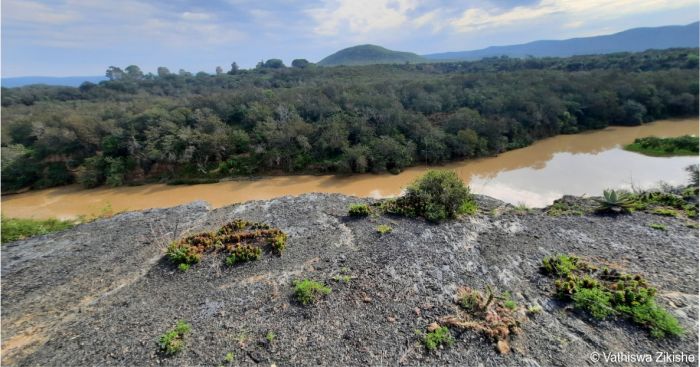
Distribution and habitat
Distribution description
Astroloba congesta has the most easterly distribution of all Astroloba species. The Eastern Cape Flora specifically mentions the distribution from Cradock to Grahamstown and therefore marks the species as endemic to the Eastern Cape Province. Like most succulents, its leaf structure allows it to thrive in dry conditions due to its ability to retain water. Typical habitat conditions are karroid flats at altitudes of 500-900m. This habitat is a resilient and distinctive feature of the flora of these regions, characterized by rocky outcrops and other harsh terrain.
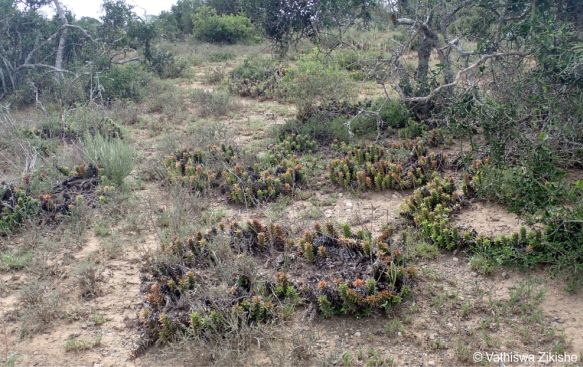
Derivation of name and historical aspects
History
The name of the genus is derived from the Greek words astros, meaning ‘star’, and lobos, meaning ‘lobe’, and refers to the star-like shape of the petals that appear at the end of the tubular flowers. Astroloba flowers are tubular because the tepals are predominantly fused, but at the time of flowering, the tips of the lobes are free and open into a comparatively regular, star-shaped arrangement. The more or less regular perianth of Astroloba species is one of the main features used to distinguish this genus from Haworthia with its more distinctly bilabiate (having two lips) flowers. The specific epithet congesta means ‘collected or accumulated’, referring to the clumping habit of this species.
The plant is classified within the subfamily Asphodelaceae, Alooideae, which is a group of plants that includes the well-known Aloe vera, is predominantly found in southern Africa.
Astroloba is one notable genus endemic to southern Africa. The geographical distribution of the genus encompasses a significant portion of the Western Cape Province, extending as far east as the central Eastern Cape Province and slightly beyond the northern provincial border of the Western Cape to the southern extent of the Northern Cape Province.
Astroloba congesta belongs to the subgenus Astroloba, section Vastora, which includes its close relative Astroloba foliosa and the much more westerly species Astroloba robusta.
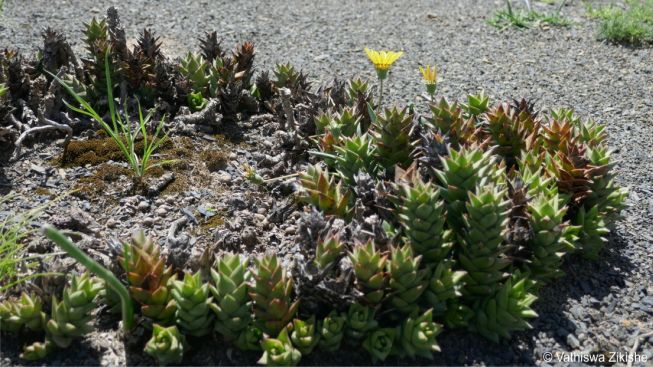
Ecology
Ecology
Like other species of the genus, the eastern astroloba plays an important role in its ecosystem, creating a micro-habitat for other species such as insects and other plants. The morphological characteristics of the species are such that they adapt to their environment, including protection from predators. In its habitat, A. congesta also grows under small bushes, which makes it vulnerable to herbivory, but its toughened leaf margins and spiny leaves act as a defense mechanism against herbivores.
The nectar-rich flowers are particularly attractive to birds and insects, especially sunbirds and bees, which facilitate the pollination process.
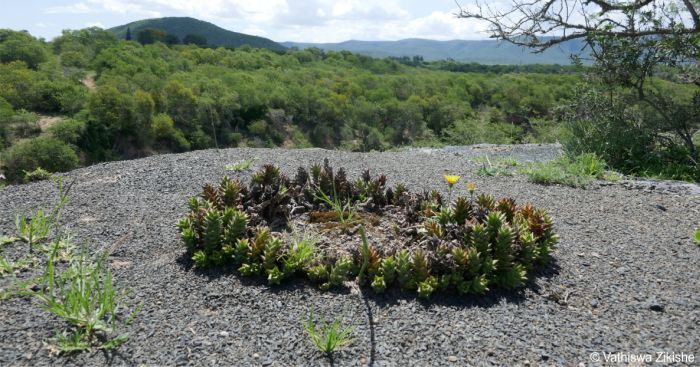
Uses
Use
In both the botanical and pharmaceutical communities, the Aloe family, Asphodelaceae, is well known for its medicinal properties. In traditional medicine in particular, many Aloe species and their derivatives have either cultural or medicinal uses. The name intelezi is generally used in the isiXhosa tradition and refers to gasterias and haworthias, aloes that are not Aloe ferox, e.g. Aloiampelos tenuior, as well as Haworthiopsis attenuata are called intelezi. Because of its Haworthiopsis-like flower, Astroloba congesta falls under the general intelezi group, but its use has never been recorded or cited, although the spiny leaves could potentially make it a protective charm, as some intelezi are either grown or hung on the door frame of a house to ward off dark spirits.
The most popular and widely recognized use of Astroloba congesta is as an ornamental, due to its unique rosette habit and stunning display of triangular leaves.
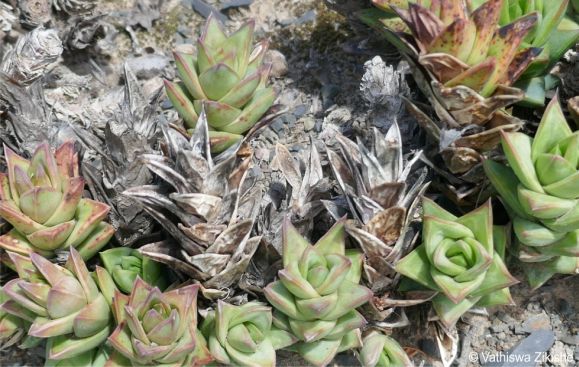
Growing Astroloba congesta
Grow
The genus Astroloba is generally easy to propagate by seed, cuttings or offsets and by dividing clumps. Propagation of A. congesta can be done in autumn. The seed germination medium should be a mixture of 50% coarse river sand and 50% sifted compost, but is not limited to these media – other possible germination mixes suitable for growing succulents may be used.
The germination mix must be uniform and sieved to remove coarse particles and other objects that may limit germination. The removed coarse particles can be used at the bottom of the germination tray to aid drainage. Use sterilised trays that are shallow to allow adequate drainage and aeration. Spread the seeds evenly over the surface of the growth medium in the trays and cover the seeds with a fine layer of sand. Keep the trays moist until germination, in partial shade until hardening off time, when they are strong enough to be exposed to sunlight.
At the Karoo Desert National Botanical Garden (NBG), vegetative propagation is usually carried out in autumn and winter, under controlled conditions. Cuttings should be taken at the node with single shoots removed, and then dried for several days to a week before planting. This is often done with some succulents. It allows the wound at the node to heal and prevents exposure to soil-borne diseases that can affect cell division for root development. A soil mix with a high sand content that promotes good drainage would be suitable for A. congesta cuttings. Ideally, a mix of 60–70% coarse river sand and 30–40% sieved compost would be suitable.
Cutting trays can be placed and monitored in a lightly shaded propagator and watered with a fine mist to avoid high soil moisture levels, which can cause cuttings to rot. Propagation by cuttings or dividing a clump can follow similar approaches, but using the seed growing medium (with coarse compost) for rooted cuttings and divisions is recommended. Astroloba congesta grows well without fertilizer or other soil amendments. At the Karoo Desert NBG, an organic liquid fertilizer is usually applied to the plants once a month during the growing season, i.e., autumn and spring, and Astroloba species have grown well with this.
Under optimum conditions, this plant can live between 5 and 10 years. With proper care, you can enjoy its beauty for many seasons. The growth rate of Astroloba congesta is moderate. It usually reaches maturity within 2 to 3 years, making it a rewarding addition to your garden or home.
Understanding these life cycle stages will help you provide the right care at each stage. This knowledge will ensure that your Astroloba congesta will thrive beautifully and enhance your gardening experience.
References
- Botanical Realm. Eastern Astroloba (Astroloba congesta). https://www.botanicalrealm.com/plant-identification/eastern-astroloba-astroloba-congesta/. Accessed on 10/03/2025.
- Bredenkamp, C. L. 2019. A Flora of the Eastern Cape Province. Volume 3. Strelitzia 41. South African National Biodiversity Institute, Pretoria.
- Dold, T. & Cocks, M. 2000. The iNtelezi plants of the Eastern Cape: traditional and contemporary medicines. Aloe 37(1): 10–13.
- Klopper, R., Smith, G.F. & Molteno, S.M. 2023. Astroloba Uitewaal (Asphodelaceae). PlantZAfrica. Online. http://pza.sanbi.org/astroloba-genus.
- Manning, J.C. et al. 2014. A molecular phylogeny and generic classification of Asphodelaceae subfamily Alooideae: A final resolution of the prickly issue of polyphyly in the alooids? Systematic Botany 39: 55–74. http://dx.doi.org/10.1600/036364414X678044
- Molteno, S., Van Jaarsveld, E.J. & Smith, G.F. 2017. Astroloba robusta P.Reinecke ex Molteno, Van Jaarsv. & Gideon F.Sm. (Asphodelaceae: Alooideae), a new species from the Great Karoo, South Africa. Bradleya 35: 201–211.
- Raimondo, D., Von Staden, L., Foden, W., Victor, J.E., Helme, N.A., Turner, R.C., Kamundi, D.A. & Manyama, P.A. (eds) 2009. Red list of South African plants. Strelitzia 25. South African National Biodiversity Institute, Pretoria.
- Rankel, K. 2025. What you should know about Astroloba congesta. Greg.app. Online. https://greg.app/astroloba-congesta-overview/.
- Rowley, G.D. 2013. Generic concepts in Alooideae: Part 3 – The phylogenetic story. Alsterworthia International Special Issue 10: 3–6.
- Succulent City. Astroloba congesta. https://succulentcity.com/astroloba-congesta/. Accessed on 10/03/2025.
- Wikipedia. Astroloba congesta. https://en.wikipedia.org/wiki/Astroloba_congesta. Accessed on 10/03/2025.
- World of Succulents. Astroloba congesta (Eastern Astroloba) https://worldofsucculents.com/astroloba-congesta/. Accessed on 07/03/2025.
Credits
Vathiswa Zikishe
Threatened Species Unit: Custodians of Rare and Endangered Wildflowers
April 2025
Acknowledgements: the author thanks Thabang Makola, Senior Horticulturist in the Conservation Garden Section of the Karoo Desert National Botanical Garden for kindly providing the description of how to grow Astroloba congesta .
Plant Attributes:
Plant Type: Succulent
SA Distribution: Eastern Cape
Soil type: Sandy, Loam
Flowering season: Spring, Sporadic/All year
PH: Acid, Neutral
Flower colour: Green, Cream
Aspect: Full Sun
Gardening skill: Easy
Special Features:
Horticultural zones
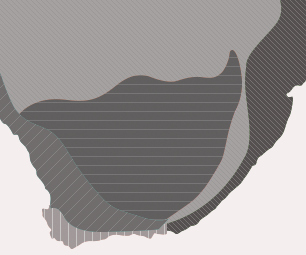








Rate this article
Article well written and informative
Rate this plant
Is this an interesting plant?
Login to add your Comment
Back to topNot registered yet? Click here to register.